Arizona Highways PhotoScapes ran a photo workshop in Oregon in August of 2018 with photographer Shane McDermott who I have had the good fortune of working with in the past. We had seven participants sign up for this adventure which made me the only volunteer. It worked out fine as a couple of the folks drove themselves so there was plenty of room in the 15 passenger van.
It was a five-day workshop that ran from Saturday to Wednesday. We flew in and out of Bend, OR which is also where the workshop began photographing Smith Rock State Park and surrounding area for the weekend.
On Monday we headed to Crater Lake. The challenge in August of 2018 was the haze of raging wildfires in Northern California whose smoke was pouring across the border and causing less than clear skies in both Bend and Crater Lake.
Bend is a city with a population a little larger than my hometown of Flagstaff. Flag is around 75,000 and Bend around 100,000. The big difference? The Deschutes River runs right through the center of town in Bend.
Now for the workshop, and how it unfolded. Getting to Bend was an adventure in itself. I flew out of Phoenix and had a 6:30 pm departure time. However, there were big dust storms in the area so the plane didn’t take off until 11:00. I made it to my hotel in Bend by 2:00 am! The next morning I met Shane in the lobby and we headed to Crater Lake to scout. I’m glad we went on Friday because the air was pretty clear. All the smoke was setting off on the horizon much like the marine layer sits offshore, waiting to pounce.
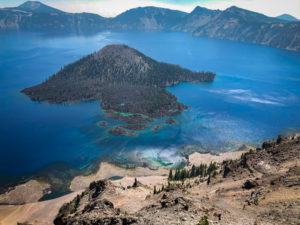
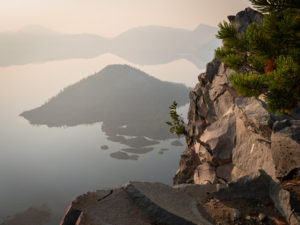
Here’s the difference a day or two makes. And sometimes the difference just a few hours makes!
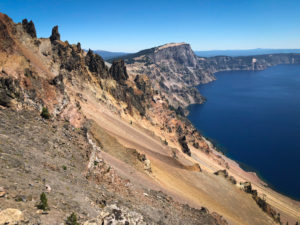
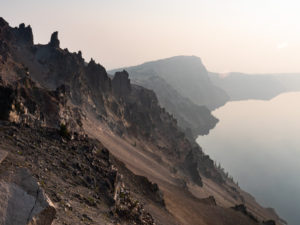
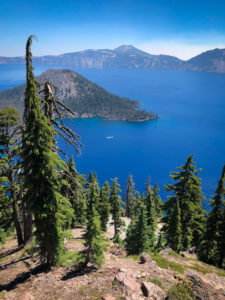
There is not always time on a workshop to scout with the photographer the day before. In this case, I was super glad it worked out in order to enjoy the blue of the lake and skies. Shooting this scene is a little bit like photographing Grand Canyon though. The pictures can not capture the scope and size of this magnificent lake.
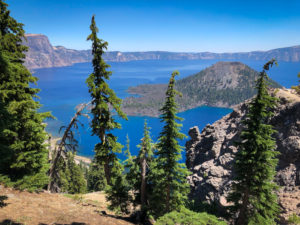
The next day we met our participants, had breakfast, engaged in a presentation from Shane, loaded lunch into a cooler, and headed out to Smith Rock State Park around 10 am. 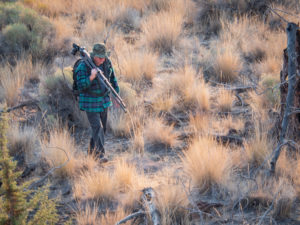
We wandered around and learned about lighting. Shooting mid-day is not ideal so we had a picnic lunch before heading back to the hotel. Sunday morning we came back here and photographed in beautiful light all morning.
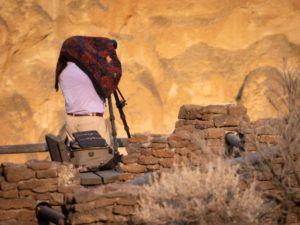
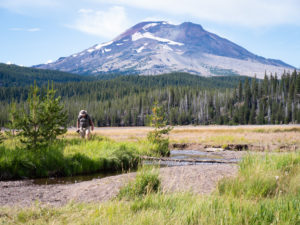
Saturday’s afternoon/evening shoot was at Sparks Lake. We had picked up a rotisserie chicken for dinner in the field. Doing that gave us a lot of time to photograph and less time sitting in a restaurant waiting for food. 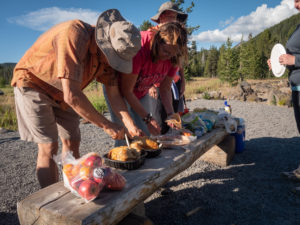
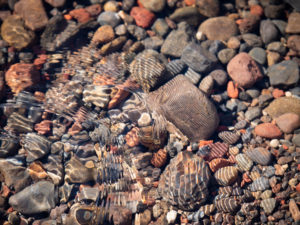
Sunday morning, after our morning shoot at Smith Rock State Park, we headed to downtown Bend for lunch and photographing along the river. The smoke was settling in so we didn’t spend much time there and headed to Tumalo Falls for about three hours where we had another picnic dinner.
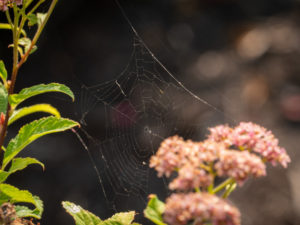
Smoky conditions kind of forces one to look at details in order to have images without a lot of haze.
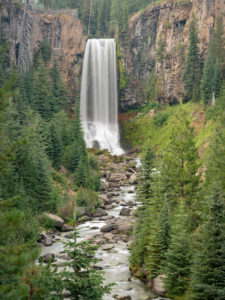
You can see the haze in the distant shots. I was able to have plenty of time to practice long exposures for those silky water shots.
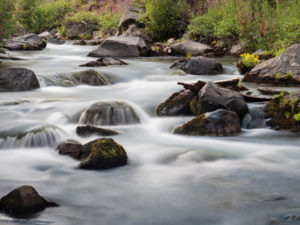
We went back to Bend for one more night at the hotel before heading to Crater Lake lodge Monday morning after another spectacular morning shooting at Smith Rock State Park. It’s so nice to hit a spot several times, especially after having image critiques during the day and getting different ideas from the talented photographers that attend our trips. That is one of my favorite things about these workshops; seeing the same place through so many different lenses. It’s really pretty cool.
So now it’s Monday mid-day and we are having a picnic at Crater Lake. As the afternoon sets in so does the smoke and the lake pretty much disappears. Shane takes us to an amazing spot that is listed as a wildflower walk. It was beautiful and easier to shoot close-ups to avoid smoke haze.
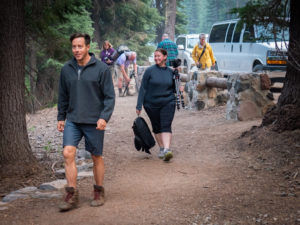 Heading off on the little wildflower hike with our fearless leader.
Heading off on the little wildflower hike with our fearless leader.
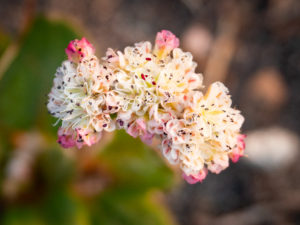
August was a great time to catch wildflowers in bloom.
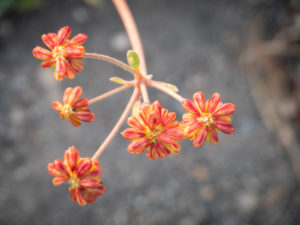
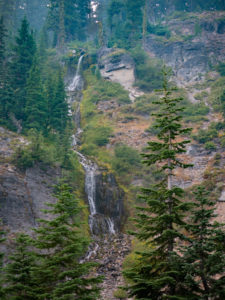
Vidae Falls is a long meandering waterfall. This is the bottom of the falls. That large rock is about the size of both my fists. It’s not quite as spectacular as Tumalo Falls but good practice nonetheless.
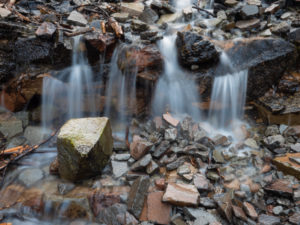
Tuesday morning we spent driving the rim and photographing the lake.
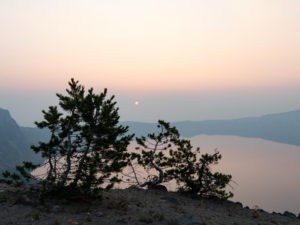
The smoke added an eery feeling to the sunrise. You know it’s thick when you can look right at the sun and not even squint.
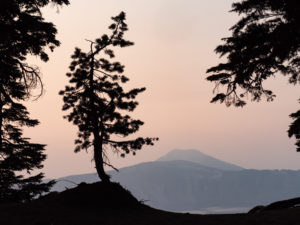
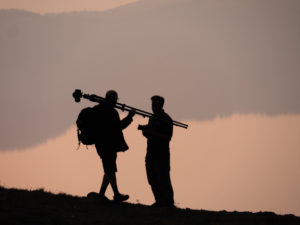 I got some great silhouettes as our photographers attempted to capture images of the lake.
I got some great silhouettes as our photographers attempted to capture images of the lake.
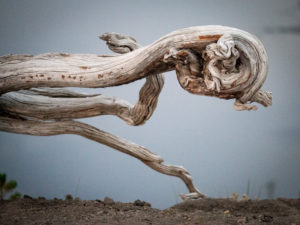
I grew tired of the expanse of lake covered in smoke so I turned my attention to other things. The trees in the area were amazing. They reminded me of alien tentacles. The one below looks like it’s going out for a run!
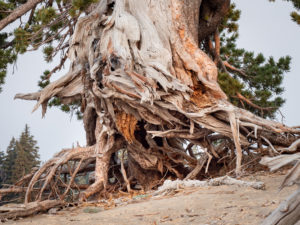
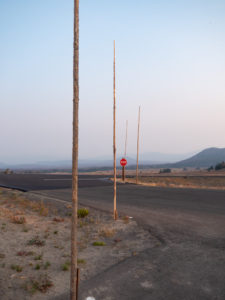 We kept driving by these poles all over the park. Apparently, they are snow poles so you can see where the road is when it snows! Imagine that much snow!! Hence why the park closes for winter.
We kept driving by these poles all over the park. Apparently, they are snow poles so you can see where the road is when it snows! Imagine that much snow!! Hence why the park closes for winter.
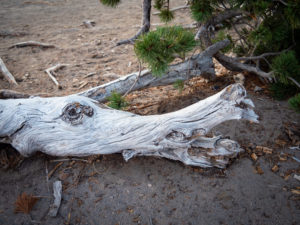 Faces were everywhere.
Faces were everywhere.
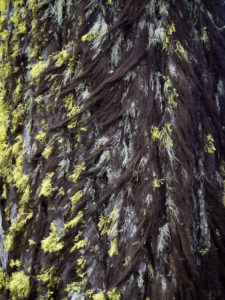 This tree looked like it was growing a fur coat for winter. One side had dark hairy looking moss and the other side bright green.
This tree looked like it was growing a fur coat for winter. One side had dark hairy looking moss and the other side bright green.
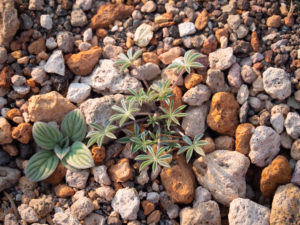 In this area of the park orange and white pumice were everywhere. It’s always interesting to me to see where plants take root.
In this area of the park orange and white pumice were everywhere. It’s always interesting to me to see where plants take root.
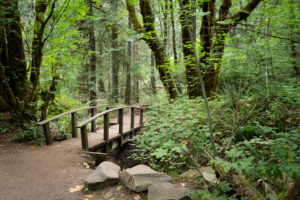
Tuesday afternoon/evening we headed out of the park and out into the forest to try to get below the smoke. Crater Lake National Park is at 7,100 feet above sea level. So we headed out and down in search of Toketee Falls, about an hour away. Toketee is a Chinook word meaning Graceful. The irony in this choice of names is that the falls were named long before the hydroelectric system was in place, and the full volume of water of the North Umpqua River was allowed to flow over the falls in a much less graceful and much more explosive manner.
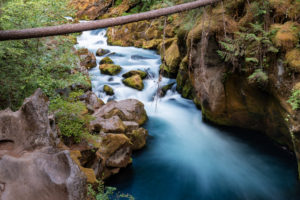
Toketee Falls is one of the most famous waterfalls in all of Oregon, renowned far and wide for the graceful columnar basalt formation framing the two-stepped falls. The North Umpqua River has carved a sinuous gorge out of the lava flow, resulting in a waterfall of 113 feet in height, a 28-foot upper tier which plunges into a pool flanked by a deep alcove, followed by an 85-foot plunge into a large pool. At the trailhead, the wooden 12-foot diameter Toketee Pipeline is passed, which diverts much of the volume of the North Umpqua River to a powerhouse downstream. This artificial taming of the river allows the waterfall to flow in an extremely consistent manner all year long.
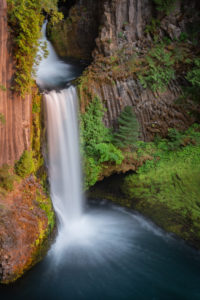
The trail up to this waterfall was strenuous in its steps but a very well maintained trail and easy to maneuver on and set up tripods. The waterfall at the end was worth the hike and for those who didn’t make it, there were plenty of moving water opportunities along the way.
Wednesday morning found us packed and ready to head back to Bend and say goodbye. We hit Watchman overlook on the way out of the park and were on the road by 10:30 am. It was a spectacular workshop led by Shane who did an amazing job of providing excellent shooting opportunities under less than perfect conditions. Such is the life of a photographer. We are always waiting for light or weather conditions to cooperate, aren’t we?
Look for this one if it ever comes up again with Arizona Highways PhotoScapes. You won’t be sorry you went.
Happy Shooting!!
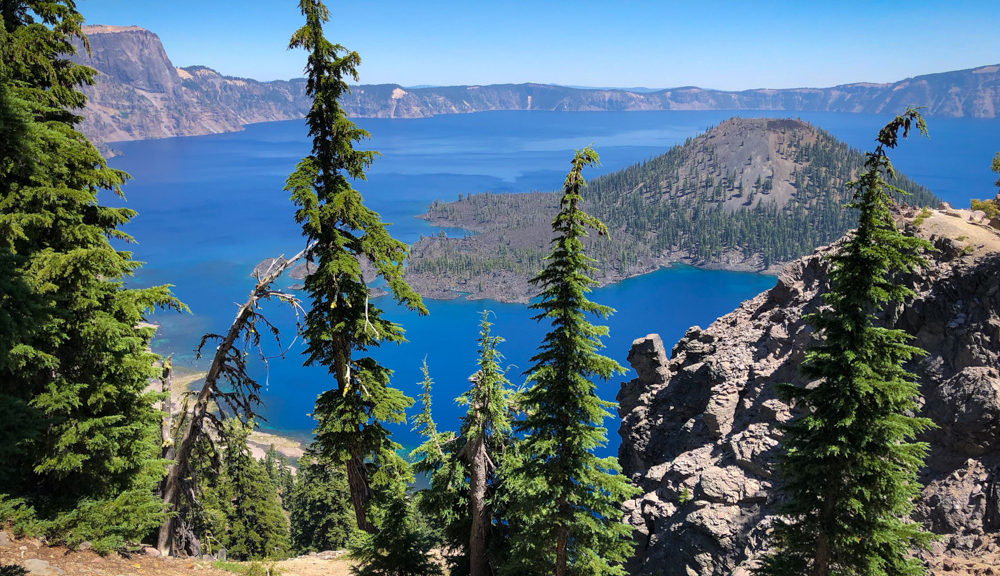
Happy Birthday Vicki! Crater Lake, another great blog. Love, Mamae
ditto on the Happy Birthday! Great commentary and wonderful photos as usual – never been there but I can now see why we should go.